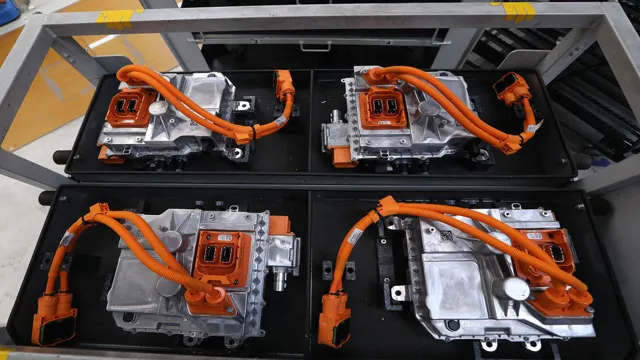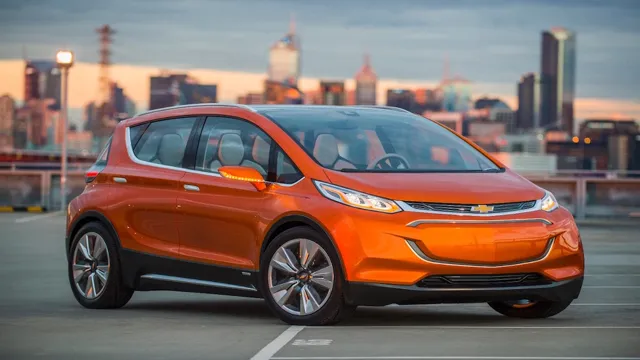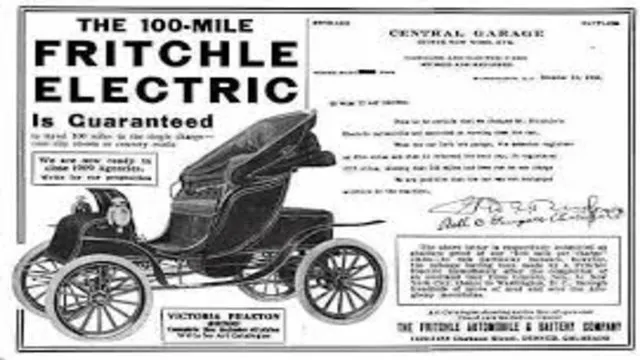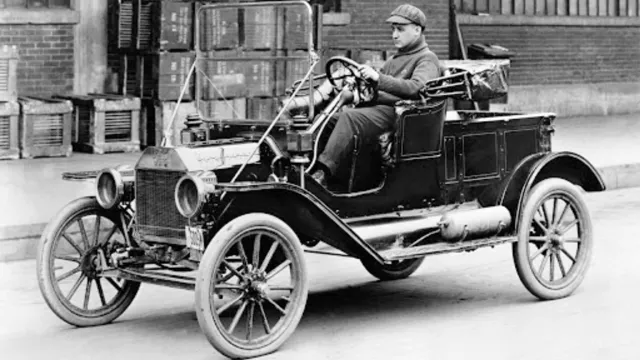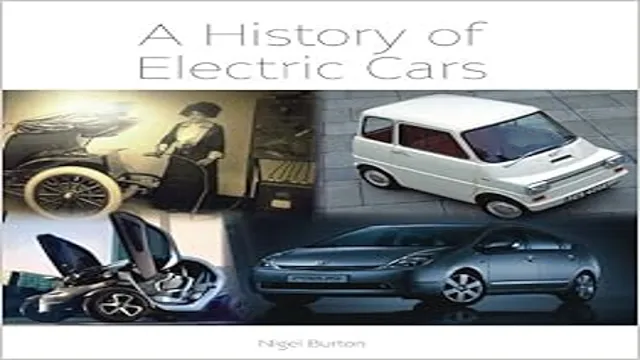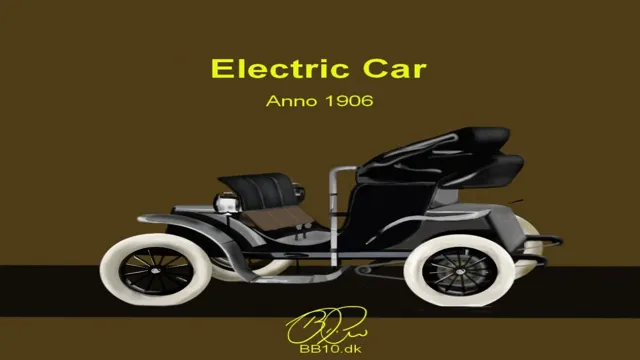The Shocking Truth: A Comprehensive Look at the Fascinating History of Electric Car Batteries
Have you ever wondered how electric car batteries have evolved over the years? Well, you’re not alone! The history of electric car batteries is a fascinating tale that spans more than a century. From the early days of electric vehicles in the late 1800s to the modern renaissance of electric cars, batteries have been at the heart of this technology. In this blog post, we’ll take a deep dive into the history of electric car batteries, exploring their evolution, their challenges, and their triumphs.
So buckle up and get ready for a ride through time!
Early Days of Battery Technology
Electric car battery history dates back to the 1800s when scientists were experimenting with various types of batteries. The first practical rechargeable battery was invented by Gaston Planté in 1859, which used lead-acid as the storage medium. This technology was used in early electric cars, making them heavy and impractical for daily use.
In 1881, Camille Alphonse Faure improved upon Planté’s design, making the lead-acid battery more efficient and reliable. In the 20th century, nickel-cadmium batteries became popular due to their higher energy density and longer lifespan. However, they were expensive and highly toxic.
With the increase in demand for electric cars, research led to the development of lithium-ion batteries in the 1980s. Today, these batteries are widely used in electric cars due to their lightweight, high energy density, and long lifespan. As technology continues to advance, we can expect further developments in electric car batteries that will make them more efficient and sustainable for the future.
Invention of the First Battery
In the early days of battery technology, inventors and scientists were fascinated by the possibility of harnessing electrical power to revolutionize our lives. It was in the year 1800 that the first battery was created by Italian scientist Alessandro Volta. His invention, known as the Voltaic Pile, used alternating disks of copper and zinc separated by pieces of cardboard soaked in saltwater to generate an electrical charge.
This was a groundbreaking discovery as it demonstrated for the first time that electricity could be created and stored in a device. The Voltaic Pile opened the door for further research in electricity and gave birth to the field of electrochemistry. Today, batteries are ubiquitous in our daily life, used in everything from cell phones to electric vehicles.
The invention of the first battery remains an essential milestone in the history of science and technology.

Making of Lithium-Ion Batteries for Cars
Lithium-Ion Batteries for Cars When we think of cars, we often think of gas-powered engines, but electrically powered vehicles have been around for quite some time now. The earliest recorded battery design dates back to the 1800s with lead-acid batteries. These early batteries were bulky and heavy, making them impractical for use in cars.
As technology advanced, scientists began experimenting with different materials and compositions, leading to the development of nickel-cadmium batteries in the early 1900s. However, these batteries were also unsuitable for use in cars due to their low energy density and toxic nature. It wasn’t until the 1980s that lithium-ion batteries were introduced, revolutionizing the automotive industry.
The use of lithium-ion batteries in cars allowed for greater energy density, longer driving ranges, and lower weight, making electric cars more practical and attractive to consumers. Today, lithium-ion batteries are quickly becoming the standard for electric vehicles, with advancements being made each year to improve their efficiency and safety.
Growth of Electric Cars over Time
Electric car battery history can be traced back to the early 1800s when the first electric motor was invented. However, it wasn’t until the 1990s that the development of modern electric vehicles began. At this time, lead-acid batteries were the go-to choice for powering electric cars.
These batteries were heavy and had limited range. But with advancements in technology, lithium-ion batteries became the game-changer. These batteries are much lighter, have a higher energy density, and can store more energy.
As a result, they have become the preferred choice for powering modern electric cars. The growth of electric cars over time has been exponential, with more and more manufacturers entering the market with new and innovative models. The shift towards electric vehicles is not only driven by the desire for a cleaner environment but also by reducing our dependence on fossil fuels.
The future of electric car battery history looks bright, with continuous developments in battery technology and more affordable pricing.
Electric Cars Sales Figure Currently in the Market
Electric cars, Market, Sales Figure, Growth, Time. Electric cars have become increasingly popular in recent years, with sales figures steadily increasing as more and more consumers become interested in affordable, eco-friendly transportation. While electric cars were once seen as a niche product, they are now very much a staple of the automotive market.
In fact, the market for electric cars has grown so rapidly that experts predict that they will make up a significant portion of all new cars sold by 2030. This growth has been spurred on by a number of factors, such as advances in battery technology, the availability of charging infrastructure, and government incentives that encourage people to buy electric cars. As this growth continues, we can expect to see electric cars becoming even more widespread, and the conventional gas-powered car eventually phased out.
So if you’re looking for a way to help reduce your carbon footprint and save money on gas, there’s never been a better time to consider switching to an electric car.
Increase in Electric Car Sales over the past years
Over the past few years, electric car sales have been increasing at a remarkable pace. The growth of electric vehicles can be attributed to various factors such as increased environmental awareness, government incentives, and technological advancements. Electric vehicles are undoubtedly gaining popularity and are expected to become increasingly common on our roads in the coming years.
In fact, according to recent statistics, the number of electric cars sold in the United States alone has risen from approximately 200,000 in 2017 to over 4 million in 2020, representing a staggering growth rate of over 600%! While this growth has been impressive, it’s worth noting that there’s still a long way to go before electric vehicles overtake traditional petrol and diesel cars. However, with the growing demand for clean energy and sustainable transportation, it’s only a matter of time before electric vehicles become the norm rather than the exception.
Future Projections for Electric Cars and Batteries
Electric cars have come a long way since their inception, and their popularity has only been increasing over the years. Experts predict that the growth of electric vehicles will continue to rise in the coming years as technology advances, prices of batteries come down, and charging infrastructure improves. According to research, by 2040, as many as 35% of all cars on the road could be electric, which is a significant increase from the percentage of electric cars on the road today.
The advancements in battery technology play a vital role in this growth. As battery technology continues to evolve, the cost for consumers to purchase electric vehicles will decrease, and the range and performance of these vehicles will increase, making them a more viable option for everyday use. The future projections for electric cars and batteries look positive, and it’s exciting to see how this technology will continue to grow and change the automotive industry as we know it.
Innovations and Development in Battery Technology
The history of electric car battery technology is a fascinating one that has seen numerous innovations and developments. The earliest electric cars used lead-acid batteries, which were heavy and provided limited range. However, in the late 1990s, the introduction of nickel-metal hydride batteries made electric vehicles more practical.
These batteries were lighter and offered better range, which was a significant improvement over lead-acid batteries. In recent years, lithium-ion batteries have become the standard for electric cars due to their high energy density and reliability. These batteries are also lighter and offer even better range than nickel-metal hydride batteries.
Further developments in battery technology, such as solid-state batteries, promise even higher energy density and faster charging times. As electric cars become more popular, the demand for better battery technology will continue to drive innovation in this field.
Solid State Batteries: Theory and Development
Solid State Batteries In the world of technology, battery innovation continues to be a crucial factor, as many of our devices rely heavily on them. With the advancement of electric vehicles, drones, smartphones, and other gadgets, researchers have shifted their focus on the development of solid-state batteries. Unlike traditional lithium-ion batteries, solid-state batteries use a solid electrolyte that enhances power density, safety, and reduces the risk of overheating.
The main advantage of this type of battery is that it has a higher energy density, which means they can store more energy within a smaller size, making them ideal for portable devices. Moreover, the durability and lifespan of solid-state batteries are expected to exceed that of lithium-ion batteries. Although there are still a few challenges to overcome, the potential benefits of solid-state batteries are quite promising and could revolutionize the energy industry in the years to come.
Advantages of Solid State Batteries over Lithium-Ion
Innovations and development in battery technology have brought about solid-state batteries as an alternative to lithium-ion ones. Solid-state batteries offer better safety, longer lifespan, and are more efficient than traditional lithium-ion batteries. With the use of solid-state batteries, there is a reduced risk of fire outbreaks, making them a safer option.
Also, solid-state batteries can store more energy in a smaller space, increasing their efficiency. They can last for a more extended period due to their resistance to wear and tear. This translates to fewer replacements and less waste, making them better for the environment.
In summary, solid-state batteries are the future of energy storage, representing a significant innovation in battery technology. They are safer, more efficient, and have greater longevity, making them a perfect replacement for lithium-ion batteries.
Conclusion
And thus concludes the electrifying tale of electric car battery history. From the humble beginnings of lead-acid batteries to the modern marvels of lithium-ion technology, the battery has truly been the driving force behind the electric car revolution. While there have been bumps in the road (and some early models that were anything but smooth drives), the batteries of today have proven to be a reliable and efficient power source for the vehicles of the future.
And who knows what new innovations might be on the horizon? One thing’s for sure – the battery will always be charged and ready to power the ride into the future!”
FAQs
What was the first electric car battery made of?
The first electric car battery was made of lead-acid and was invented in 1859 by French physicist Gaston Planté.
How has electric car battery technology advanced over time?
Electric car battery technology has advanced significantly, with modern lithium-ion batteries being smaller, lighter, and more efficient than their predecessors. They also have a longer lifespan.
What is the lifespan of an electric car battery?
The lifespan of an electric car battery can vary depending on factors such as usage, temperature, and charging habits, but they are designed to last for at least 100,000 miles.
How is the disposal of electric car batteries handled?
Electric car batteries are recyclable, and efforts are being made to develop more sustainable and efficient recycling methods. Some manufacturers also offer take-back programs for used batteries.
